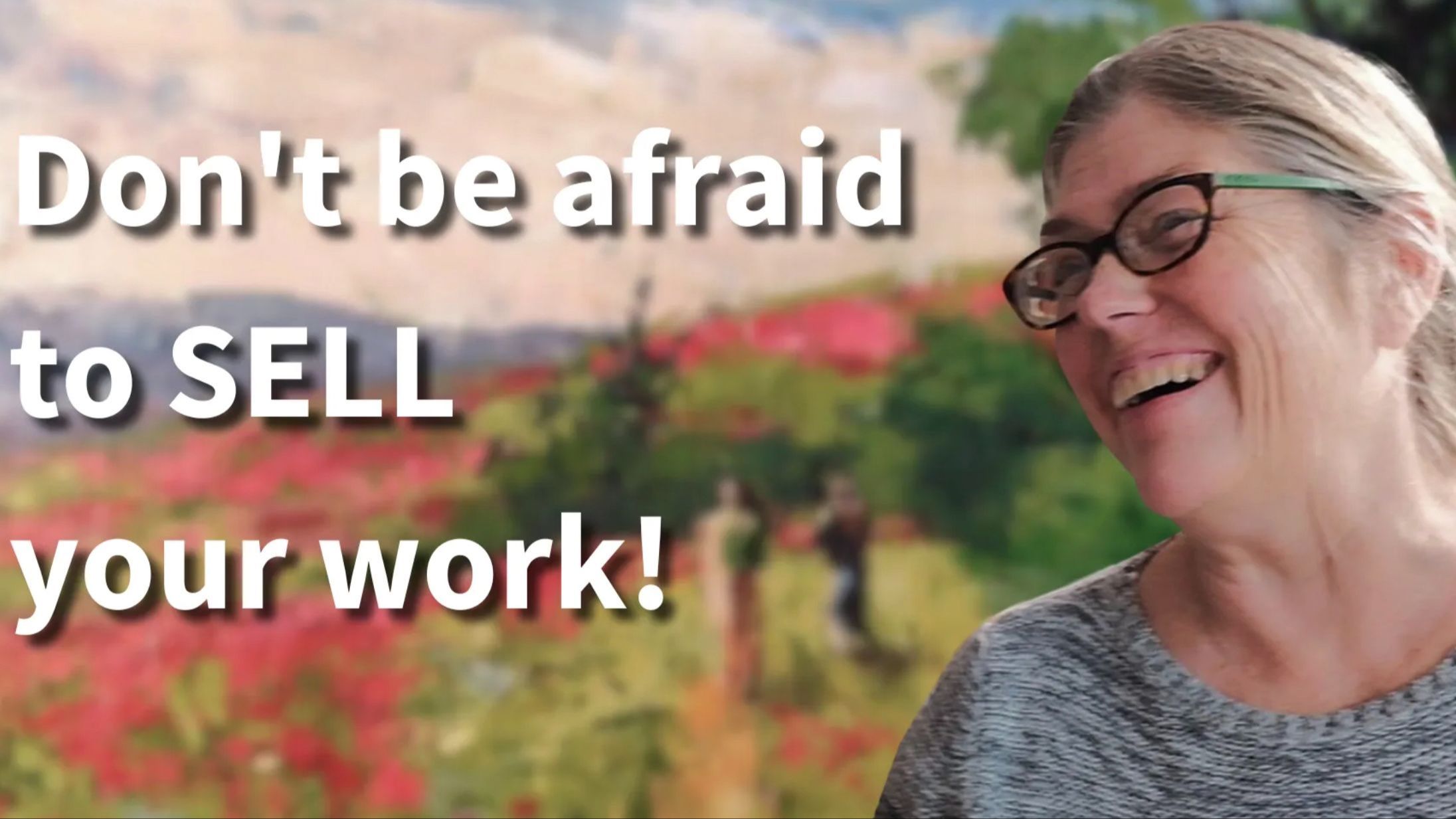"Don't be afraid to sell your artwork." Interview With Dianna Shyne

"Selling your work is a very personal decision, and it can be challenging to determine when you feel ready. If someone loves your work and wants to buy it, don't be afraid to sell it to them."
During a recent Masterclass, Dianna Shyne participated in a Q&A session with artists and students from all over the world! There’s some great nuggets of painting wisdom in here from one of the world’s best Acrylic artists. Enjoy!
What brand of paint do you use?
I mainly use Golden and Winsor & Newton professional acrylic paints. However, due to some supply chain issues, I sometimes have to find the colors I want from other brands.
What is glazing?
Glazing is a technique where you mix up transparent color with water or glazing liquid and paint over an existing painting. This can change the color, value, or temperature of the painting while still allowing you to see through to the layers beneath. It's a great tool for adjusting the appearance of a painting.
What surface do you paint on?
I typically paint on Da Vinci Ultra Smooth panels, which are made from MDF mounted on a wooden board. I find these panels to be easy to work with because they have no canvas grain that can interfere with brush strokes, and they store easily. You can also sand them down and repaint them if needed.
How much paint do you mix up for each color?
It depends on the painting. For instance, if my painting is mostly green, I'll mix up a large pile of generic green and then pull off smaller amounts to make different shades. I usually create large dollops of the six main hues (purple, orange, green, red, yellow, and blue) and adjust the amounts based on the needs of the painting.
How many years of practice did it take for you to feel confident in selling your work?
It took me quite a while to feel confident, but people began buying my paintings early in my career when I was a watercolor painter. Selling your work is a very personal decision, and it can be challenging to determine when you feel ready. If someone loves your work and wants to buy it, don't be afraid to sell it to them.
How do you keep from making muddy colors?
To avoid muddy colors, keep your paint colors organized in a color wheel on your palette and make sure to use clean palette paper and clean brushes. If you have a small palette, it's more likely to get muddy due to limited mixing space, so I recommend using a larger palette like a 12x16-inch stay-wet palette.
Remember, as an artist, your work is unique and special. Embrace your individuality and share your work with others – it can be a beautiful and rewarding experience.
How do you lighten red without it being pink?
To lighten red without making it pink, I add yellow and white, not just white. When you add yellow and white, you create a warm, orangey, coral red, rather than a dark, cool pink.
How do you switch colors so quickly without mixing color unintentionally and keep them so clean?
I do a quick swish in water and then wipe my brush on a paper towel. The key is to keep the paint out of the ferrule of your brush by using the tip of your brush. If you scoop the paint up on the tip of your brush and it doesn't soak way up under where the metal and wood connect, it's much easier to keep the brush clean. Otherwise, the dirty paint way up inside leaks down into your other colors and gets all messy. Make sure you're lifting the paint up with the tip of the brush, and it'll come right off when you swish and wipe.
Will anyone be teaching us how to use a palette knife?
Although we don't have much palette knife instruction in this specific course, we do cover more of that inside the membership. We recently did some sessions with different artists using the palette knife, and I've also shared some techniques using the palette knife.
What do you think of working on a glass palette?
Some artists do work on a glass palette, but I prefer the Masterson's palette. Oil painters often use glass palettes because the oil paint doesn't dry out, but for acrylics, it can be a challenge. If you decide to use a glass palette, I recommend using slow-dry acrylic paint to help prevent the paint from drying too quickly.
What do you recommend for people who live in drier climates and have trouble keeping their paints wet?
When I lived in a dry climate, I used a small humidifier to add more humidity to my studio, which helped keep my paints from drying out too quickly. You can also try using an extender or slow-dry paints. Keeping your air conditioner on can help too. When I tried painting with my acrylics in Arizona during the summer, I had to constantly mist my brush and paint because it dried out so quickly.
Do you use distilled water in your palette?
No, I don't use distilled water. If the shop towels in my palette get dirty or smelly, I simply lift the palette paper out, put new shop towels down, and place the palette paper back. I've never had any trouble with mold using shop towels.
How do you add dimension to your painting for things that are closer and further away?
Interestingly, I'm just finishing a big course for Acrylic University that includes an entire section on that topic. A lot of it comes down to values. The difference in values between objects in the foreground, middle ground, and background creates a sense of depth and dimension in your painting. Make sure to pay attention to the value section in this course for more information on this technique.
What happens if acrylic paints freeze?
Don't let your acrylic paints freeze, as it ruins the binder and makes them gummy and hard to paint with. They can either turn into cottage cheese or glue because the freezing affects the binder. So, bring them in out of the car if it's freezing outside and don't store them in the freezer. If you're painting outdoors in winter, be cautious of the freezing temperatures affecting your paint.
What do you do if you're painting outside in cold conditions?
Painting outside in cold conditions can be tricky. For example, when I painted in the Canadian Rockies, it was just above freezing, and I thought my paints would stay wet forever. However, I didn't realize how dry it was, and my paints still dried quickly. In such conditions, you may need to adjust your techniques or use additives to keep the paint workable. Just be prepared for the challenges that cold temperatures and dry air can present, and be willing to adapt your approach as needed.
We hope you found some helpful pieces of information! You can visit Dianna Shyne's website right here to see some of her wonderful works of art




